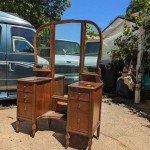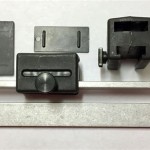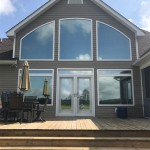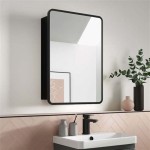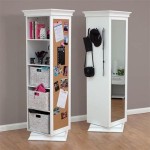Antique and Vintage Bathroom Mirrors: A Reflection of History and Style
Antique and vintage bathroom mirrors offer more than just a reflective surface; they provide a tangible connection to the past, adding character, charm, and a distinctive aesthetic to any bathroom space. These mirrors, often crafted with meticulous detail and using materials no longer common in mass production, represent a unique form of artistry and functionality. They stand in contrast to modern, minimalist designs, inviting us to appreciate the craftsmanship and design sensibilities of bygone eras.
The terms "antique" and "vintage" are often used interchangeably, but they technically differ in age. Generally, an antique item is at least 100 years old, while a vintage item is typically between 20 and 99 years old. This distinction is important when considering the value, provenance, and restoration requirements of a particular mirror. Both antique and vintage mirrors can be valuable additions to a bathroom, but understanding their age and condition is crucial for making informed decisions.
The allure of antique and vintage bathroom mirrors lies in their ability to elevate a space beyond mere functionality. They become focal points, sparking conversation and adding a touch of sophistication. They can complement a variety of bathroom styles, from traditional and Victorian-inspired designs to more eclectic and contemporary settings. The key is to carefully consider the mirror's style, size, and condition to ensure it harmonizes with the overall aesthetic of the bathroom.
Identifying Key Features and Styles of Antique Bathroom Mirrors
When evaluating antique and vintage bathroom mirrors, certain features and styles can help determine their age, origin, and potential value. Examining the mirror's frame, the type of glass used, and any decorative elements is essential for authentication and appreciation.
Frame Materials and Designs: The frame of an antique or vintage bathroom mirror provides valuable clues about its age and style. Common materials include wood, metal, and composite materials like gesso. Wooden frames might be crafted from hardwoods such as oak, mahogany, or walnut, often featuring intricate carvings, moldings, or inlays. Metal frames, particularly those from the Art Deco period, frequently incorporate chrome, nickel, or brass, showcasing geometric patterns and sleek lines. Gesso, a plaster-like material, was often used to create ornate frames that were then gilded or painted. The condition of the frame, including any signs of wear, damage, or previous repairs, should be carefully assessed.
Mirror Glass Characteristics: The glass itself can offer insights into the mirror's age. Early mirrors were often made with "float glass," a process that resulted in a slightly wavy or imperfect surface. This characteristic can be a distinguishing feature of older mirrors. Silvering, the process of applying a reflective coating to the back of the glass, has also evolved over time. Older mirrors may exhibit signs of silvering loss, appearing as dark spots or streaks. While some silvering loss can be considered part of the mirror's patina, extensive deterioration may require professional resilvering.
Common Styles and Periods: Recognizing the dominant styles and periods in mirror design helps in identifying and appreciating antique and vintage bathroom mirrors. Victorian mirrors often feature elaborate frames with ornate carvings, floral motifs, and dark wood finishes. Art Deco mirrors typically showcase geometric shapes, streamlined designs, and chrome or nickel accents. Mid-century modern mirrors often emphasize simplicity and functionality, with clean lines and minimalist frames. Identifying the specific style and period allows for a more informed understanding of the mirror's historical context and aesthetic appeal.
Restoring and Maintaining Antique and Vintage Bathroom Mirrors
Proper restoration and maintenance are crucial for preserving the beauty and longevity of antique and vintage bathroom mirrors. These delicate items require careful handling and specialized techniques to avoid further damage and ensure their continued functionality. The bathroom environment, with its fluctuating humidity and temperature, presents unique challenges for preserving these historical pieces.
Frame Restoration Techniques: Restoring the frame of an antique or vintage bathroom mirror often involves cleaning, repairing, and refinishing. Gentle cleaning with a soft cloth and mild soap solution is typically sufficient for removing surface dirt and grime. More stubborn stains or finishes may require specialized cleaning products designed for the specific frame material. Repairs to damaged frames, such as chipped or cracked wood, should be performed by a skilled restorer to ensure the integrity of the original construction. Refinishing the frame, whether with paint, varnish, or gilt, should be done with careful consideration to match the original finish as closely as possible.
Mirror Glass Care and Repair: The mirror glass itself requires delicate handling and specialized care. Avoid using harsh chemicals or abrasive cleaners, as these can damage the silvering and scratch the surface. Gently wipe the glass with a soft, lint-free cloth and a mild glass cleaner. For mirrors with significant silvering loss, professional resilvering may be necessary. This process involves removing the old silvering and applying a new reflective coating to the back of the glass. Resilvering should be performed by a qualified specialist to ensure a high-quality and long-lasting result.
Preventative Measures for Bathroom Environments: The bathroom environment poses specific challenges for preserving antique and vintage mirrors. High humidity can accelerate the deterioration of the frame and silvering. Proper ventilation is crucial for reducing moisture levels and preventing mold and mildew growth. Consider using a dehumidifier to further control humidity. Avoid placing the mirror in direct contact with water or steam, as this can lead to damage. Regularly inspect the mirror for signs of deterioration and address any issues promptly to prevent further damage.
Sourcing and Evaluating Antique and Vintage Bathroom Mirrors
Locating and evaluating antique and vintage bathroom mirrors requires a discerning eye and a thorough understanding of the market. Several avenues exist for sourcing these pieces, each with its own advantages and considerations. Careful inspection of the mirror's condition, authenticity, and provenance is essential for making informed purchasing decisions.
Potential Sources for Antique and Vintage Mirrors: Antique stores, flea markets, online auctions, and estate sales are all potential sources for antique and vintage bathroom mirrors. Antique stores often offer a curated selection of pieces that have been vetted for authenticity and condition. Flea markets can provide opportunities to find hidden gems at lower prices, but require more diligent searching and evaluation. Online auctions offer a vast selection of mirrors from around the world, but it's crucial to carefully review the item description, photos, and seller reputation before bidding. Estate sales can be a treasure trove of antique and vintage items, but require flexibility and the ability to assess items quickly.
Factors Affecting Value and Authenticity: Several factors influence the value and authenticity of antique and vintage bathroom mirrors. The mirror's age, style, rarity, condition, and provenance all contribute to its market price. Mirrors from well-known makers or designers typically command higher prices. Excellent condition, with minimal signs of wear or damage, significantly increases the value. Provenance, or the history of ownership, can also add to the mirror's appeal and worth. It's important to research the mirror's style, materials, and manufacturing techniques to verify its authenticity and ensure it is accurately represented.
Assessing Condition and Potential Restoration Costs: Before purchasing an antique or vintage bathroom mirror, carefully assess its condition and estimate the potential restoration costs. Examine the frame for any signs of damage, such as cracks, chips, or warping. Inspect the mirror glass for scratches, chips, or silvering loss. Consider the cost of any necessary repairs, cleaning, or refinishing. Factor in the cost of professional restoration services if needed. Weigh the potential costs against the mirror's value and your personal preferences to determine if it's a worthwhile investment.

Antique Mirrors In A Bathroom Adding Charm Character

Antique Mirrors In A Bathroom Adding Charm Character

Antique Mirrors In A Bathroom Adding Charm Character

Antique Mirrors In A Bathroom Adding Charm Character

Glam Powder Room With Antique Oval Mirror Transitional Bathroom Round Ornate

Antique Mirrors In A Bathroom Adding Charm Character

Posts About Garage On Re Inventing Vintage French Country Bathroom Decor

Antique Mirrors In A Bathroom Adding Charm Character

Wall Mounted Bathroom Mirror Collection Vintage Tub Bath

Sandnes Vintage Mirror Antique Wall 5 Diffe Colours 6 Widths Singaporehomefurniture


